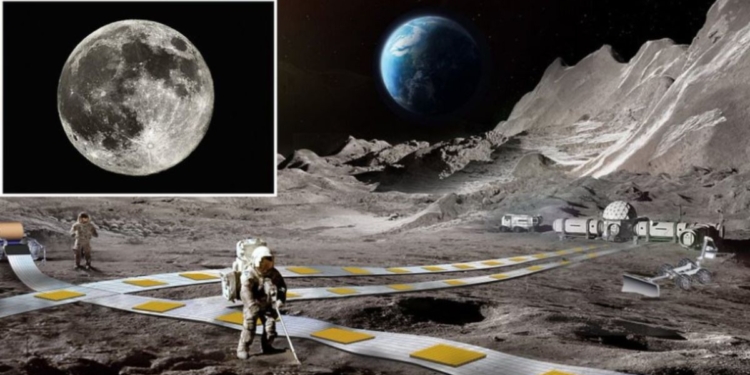Call it the Little Engine that Might.
NASA says it is exploring the concept of building a railway system on the moon for the day when it becomes not just an object in the sky, but a working mine for minerals that Earthlings might covet.
The concept is called Flexible Levitation on a Track, or FLOAT, and it envisions levitating magnetic robots shuttling about 100 tons of materials per day on the surface of the moon, according to the Daily Mail.
Project leader Ethan Schaler, a robotics engineer at NASA’s Jet Propulsion Laboratory, outlined the goals of the project on NASA’s website.
“We want to build the first lunar railway system, which will provide reliable, autonomous, and efficient payload transport on the Moon,” he wrote.
NASA begins project to build railway station and run trains on the moon.
Expected to be finished in the 2030s pic.twitter.com/tZE2bDuo1g
— Pubity (@pubity) May 10, 2024
“A durable, long-life robotic transport system will be critical to the daily operations of a sustainable lunar base in the 2030’s, as envisioned in NASA’s Moon to Mars plan and mission concepts like the Robotic Lunar Surface Operations 2.
“The FLOAT system employs unpowered magnetic robots that levitate over a 3-layer flexible film track: a graphite layer enables robots to passively float over tracks using diamagnetic levitation, a flex-circuit layer generates electromagnetic thrust to controllably propel robots along tracks, and an optional thin-film solar panel layer generates power for the base when in sunlight.
“FLOAT robots have no moving parts and levitate over the track to minimize lunar dust abrasion / wear, unlike lunar robots with wheels, legs, or tracks,” he wrote, noting that the concept means no major lunar construction would be required.
NASA wants to build a train on the MOON for when humans eventually live there https://t.co/T6nm34QfeD pic.twitter.com/Q3TeJ3TQi1
Would you like to travel to the moon one day?— Daily Mail US (@DailyMail) May 10, 2024
“FLOAT will operate autonomously in the dusty, inhospitable lunar environment with minimal site preparation, and its network of tracks can be rolled-up / reconfigured over time to match evolving lunar base mission requirements.”
The project is one of several projects funded under NASA’s Innovative Advanced Concepts program.
“These diverse, science fiction-like concepts represent a fantastic class of Phase II studies,” NASA executive John Nelson said.
These ambitious endeavors are part of NASA’s Innovative Advanced Concepts (NIAC) program, which allocates funding for ongoing research into groundbreaking ideas.
.
Source : @timesofindia
.#popupmedia #NASA #SpaceExploration #ScienceFiction #RevolutionaryProjects #Lunarmission pic.twitter.com/SHNH8JIMya— popup Media India (@PopUpMediaIndia) May 8, 2024
One project, called FLUTE, looks to create a large optical observatory in space. The “Pulsed Plasma Rocket” concept is designed to explore the possibility of creating “fission-generated packets of plasma for thrust” to reduce commuting time between Earth and any location in the solar system.
A project called the Great Observatory for Long Wavelengths would use low-frequency radio signals to explore the universe. The Radioisotope Thermoradiative Cell Power Generator would explore new ways to power spacecraft.
The ScienceCraft for Outer Planet Exploration project would send a solar sail to explore the outer solar system.
______________________________________________
This article appeared originally on The Western Journal.


























 Continue with Google
Continue with Google